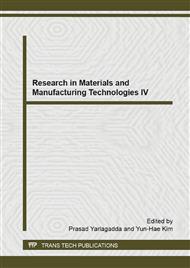p.436
p.441
p.446
p.450
p.454
p.460
p.465
p.471
p.475
Failure Analysis and Study on Heat Treatment Process of Grate Bars Used in Sintering Trolley
Abstract:
The as-cast grate bar structure used in sintering trolley is primarily comprised of austenite and eutectic (eutectic austenite and eutectic carbide).The austenite is dendrite, while the carbides are reticular and chrysanthemum-like. The failed grate bar structure primarily consists of ferrite, carbide, martensite and residual austenite; cavity shrinkage and shrinkage porosity exist in the structure, and the fracture exhibits typical cleavage fracture characteristics. The primary means of failure are abrasion and fracture. The secondary carbides precipitated in the sample (quenching (1050°C+2.5h)+ tempering (390°C+2.5h)) and the other one (quenching (1050°C+2.5h)+ tempering (420°C+2.5h) ) are dispersed and refined. Compared with the as-cast one, their relative abrasion resistance performances respectively are 0.8645 and 0.8752.The values of hardness and impact toughness of the samples heat-treated are greater than those of the as-cast grate bar. The optimum heat treatment process is as follows: quenching (1050°C,2.5h) + tempering (390°C~420°C,2.5h)
Info:
Periodical:
Pages:
454-459
Citation:
Online since:
December 2014
Authors:
Keywords:
Price:
Сopyright:
© 2015 Trans Tech Publications Ltd. All Rights Reserved
Share:
Citation:


